11 Step Guide On How To Winterize A Boat

For people who live in a place that has a cold winter season, it is very important to know how to winterize a boat. This is best done before the freezing weather comes. Failure to do this could result in expensive repairs. Below are the common steps to winterize a boat for most engines.
- Avoid fuel deterioration by applying a fuel-stabilizing additive in the fuel tank. This will prevent the formation of gum and varnish and keep the gasoline fresh. After applying the additive, run the engine for a few minutes to get the treated gasoline throughout the system. Then fill the fuel tank to prevent condensation.
- Replace the engine oil in the crankcase of the boat. When old oil is left on this part of the boat it can form acids that damage engine components and shorten its lifespan. In doing this, it is best to warm up the engine first so more dirt and old oil will flush out. And as always advised, use only high-quality oil and filters. It would also be a good practice to replace the filters as well.
- Replace gear case oil from your lower unit. It is always a good practice to change gearcase oil at the same time you change engine oil. This practice will ensure your engine and gearcase are always serviced properly and timely. Ensure the engine is lowered to its full down position to ensure rainwater doesn’t fill the foot of the lower unit. Freezing water can damage the lower portion of your drive.
- The next step is to fog the cylinders of your engine. This is accomplished by removing the spark plugs and spraying a fogging agent into the cylinders then replace the spark plugs. This will ensure that your cylinders internally do not corrode from long storage periods.
- For inboard/outboard engines with a seawater cooling system, it is necessary to install antifreeze throughout the engine’s cooling system. This will prevent freezing water in your engine block. This is accomplished by running your motor and using a flush system that can be purchased at your local boat parts store that will aid in this task.
- To ensure your batteries stay fresh all winter long. You will need to place a trickle charger on your batteries. It may be easier to remove the batteries to place them in your garage on a trickle charger. A trickle charger can be purchased from any parts store for about $30.00.
- Next, we need to winterize the fresh water system on the boat. This is accomplished by draining the entire freshwater system. Ensuring all faucets are opened and drained. Completely depleting the freshwater tank. Depending on the size of your freshwater tank add enough antifreeze to get the pumps to push to all faucets. Typically 1-5 gallons is sufficient. It is normally pink in color so you will know when you are pushing antifreeze through the faucets.
- Have your head waste tank pumped and rinsed. Then add antifreeze to the waste tank. About one gallon should be sufficient. Add another gallon of antifreeze to the toilet and flush the toilet.
- Other systems to consider winterizing are Air conditioner systems, bait wells, and raw water systems. This can be accomplished by disconnecting the water lines at the lowest point. This is usually in the bilge area.
- Winterization is typically a good time to inspect all components including the engine electrical systems, safety systems, fiberglass, and upholstery. So that you can ensure when the summer comes you will have everything ready to enjoy your boat. Wash and wax your boat thoroughly. Remove as many items as possible to a dry storage area, maybe your home attic or loft area for example. Cover your vessel with its boat cover or shrink wrap. Ensure your cover is positioned in a way so that it sheds water and does not create a water trap. A good practice is to have a good dehumidifier in that space to prevent mold and moisture.
- Lastly, remove the drain plug and position your boat bow high to ensure rainwater sheds off the boat properly and allows the boat bilge to drain.
These maintenance tips will surely help you keep your boat in good condition during the winter period. With this, you can be sure that your boat will run in good performance the next time you use it. Improper boat winterization can cause thousands of dollars in repairs.
